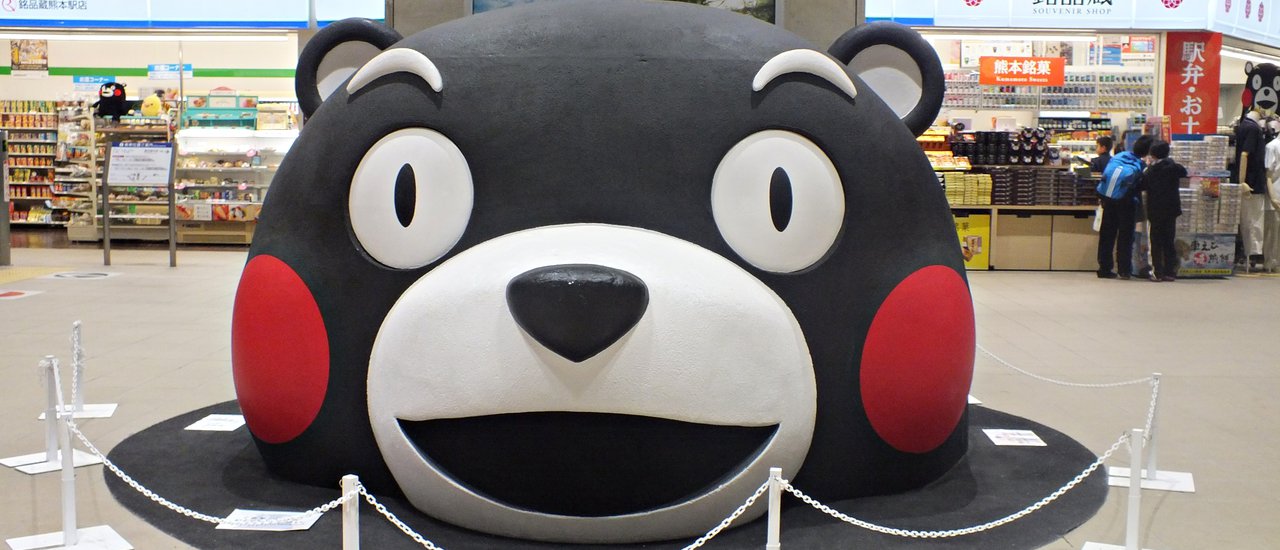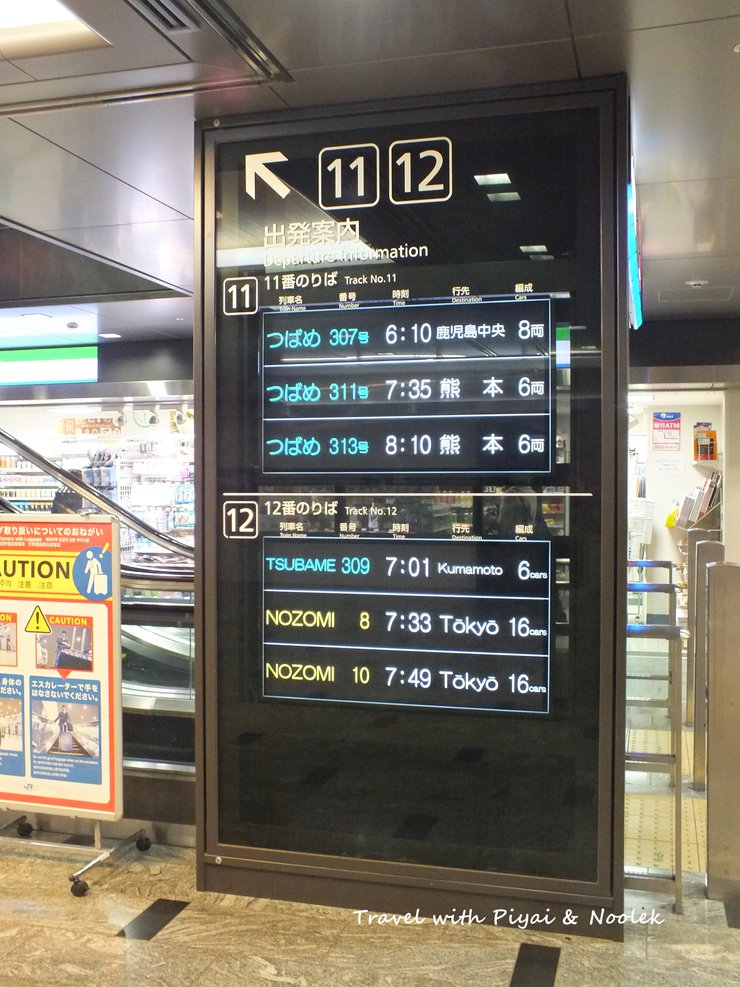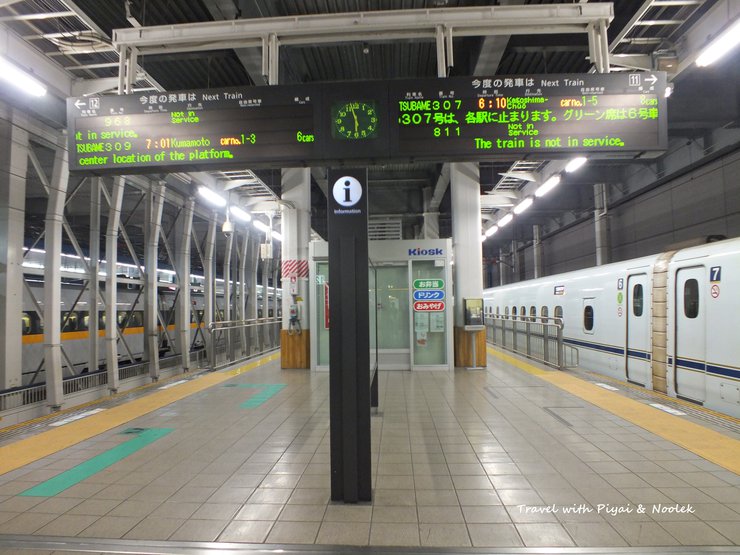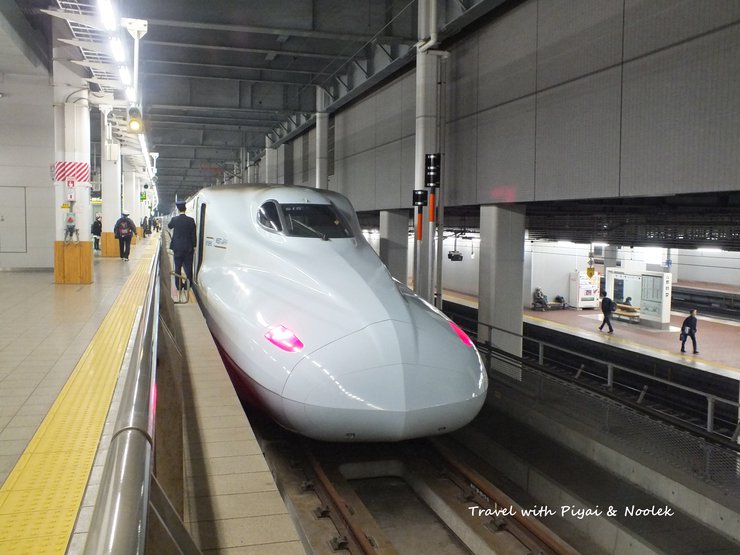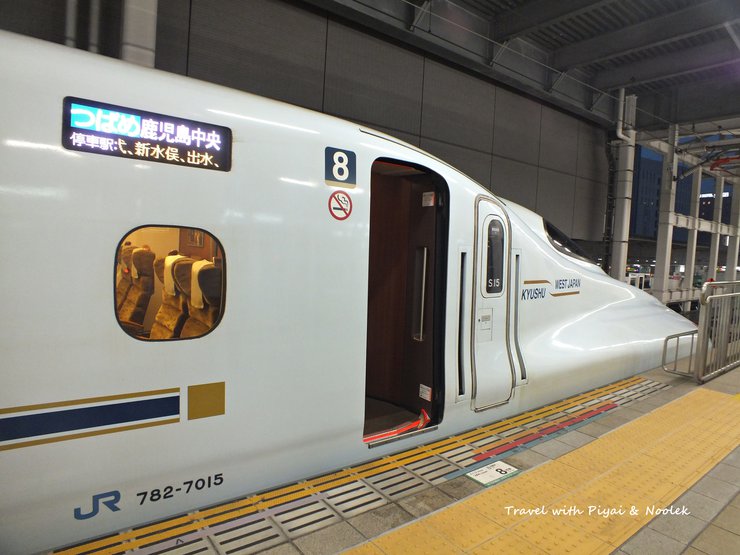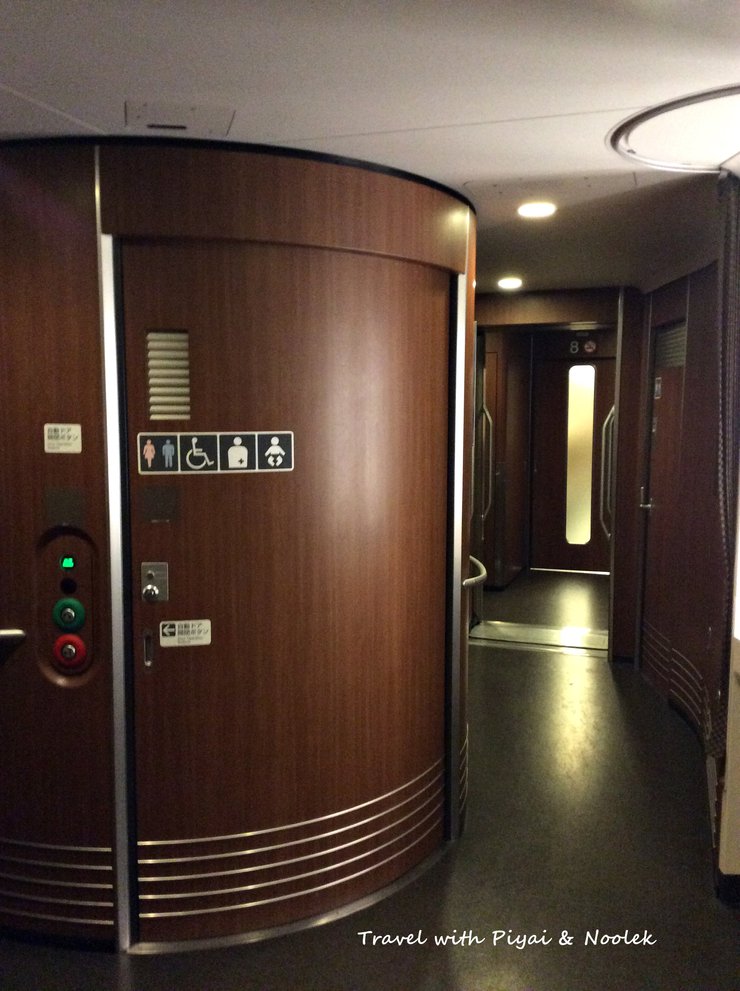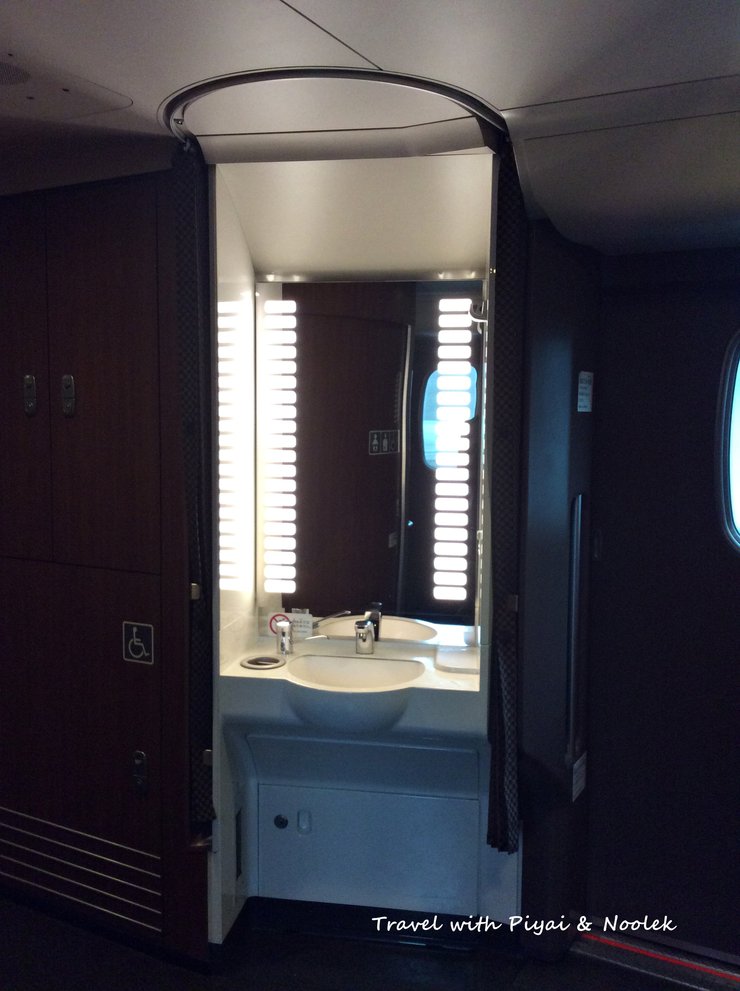This morning, we woke up early to catch our train to Kagoshima. We boarded the Tsubame307 Shinkansen, which departed at 6:10 AM and arrived in Kagoshima at 8:10 AM, after a two-hour journey.




The Tsumabe307 train, which took us from Hakata to Kagoshima, is another Shinkansen train that we are proud to present because during the journey we received unforgettable comfort from the amenities. We were impressed by how well they were arranged, as if this were not the atmosphere on a train.

Bathroom

Dressing Room

Drinking water vending machine



Enjoy a comfortable breakfast on the train.

Today seems to be an unlucky day. We woke up early in the morning to find heavy rain pouring down, making everything soggy. Checking the weather forecast, it seems like the rain will continue throughout the day and cover the entire area we planned to visit. Therefore, we probably won't be able to do anything productive today, which is quite disappointing. However, since we have already made plans and booked tickets, we will still go according to the plan. At least we can enjoy a train ride.
Upon arrival, the rain continued to fall, hindering our sightseeing plans. Unable to walk around, we opted for a city sightseeing bus tour. The City View bus stop is conveniently located in front of a department store near Kagoshima-Chuo Station, where we arrived by Shinkansen. The Kagoshima City View Chuyu Bus offers two routes, with information displayed at the stop indicating their destinations. We chose a route based on our preferences and available time. Passengers can hop on and off at designated stops to explore, then return to the same stop to continue the tour. However, due to the heavy rain, we were unable to get off at any stops and simply enjoyed the city views from the bus. Unfortunately, we were unable to capture any photos to share.

Tram in Kagoshima

City View Bus Schedule


The bus has arrived.
Kagoshima, located at the southern tip of Kyushu Island, offers a distinct experience compared to other Japanese prefectures. Its subtropical climate, influenced by its southern location, resembles that of Naples, Italy, earning it the nickname "Naples of the East."
The city's most striking feature is the active volcano on Sakurajima Island. The volcano continuously emits smoke, and the entire city sits on land formed by volcanic eruptions. The absence of skyscrapers provides unobstructed views of the volcano, even from within the city. While I initially considered taking a boat trip to Sakurajima Island, the inclement weather forced me to abandon the idea.


The fertile volcanic soil allows for the cultivation of various crops, including giant radishes, a local specialty. These radishes are often pickled and sold in packets, making them a popular souvenir for visitors to the island.

The City View car we are riding in.
In conclusion, due to the incessant rain, we were unable to venture out and were confined to our vehicle. We simply waited for the train to take us to the next city, unable to explore Kagoshima as intended. This is a reality that travelers must accept: plans can often go awry.
After our unsuccessful trip to Kagoshima due to heavy rain, we boarded the Sakura 560 Shinkansen to Kumamoto Prefecture. We were following our pre-booked train tickets and hoping for lighter rain so we could explore the area. Otherwise, the entire day would be a washout, even though there was no pressure to find meaning in every moment.


Our lunch.

Distant mountains in sight, or could it be Sakurajima Island?
Upon arrival, Kumamoto warmly welcomes us from the train station with "Kumamon," the prefecture's mascot, waiting to greet us throughout the station. Adorable and playful, Kumamon dolls can be found all over the station, including in the souvenir shops inside, as every product features this mascot as decoration.




Stepping outside the station, we noticed the rain had subsided. Without hesitation, we boarded the tram in front of the station and headed towards Kumamoto Castle. The Kumamoto City Tram provides convenient transportation within Kumamoto City, passing by major tourist attractions such as Kumamoto Castle and Suizenji Garden. To board the tram, enter through the middle door and pay upon exiting. We took Line A, which runs from Tasakibashi Station to Kengunmachi Station, passing through JR Kumamoto Station where we had arrived. Line B runs from Kamikumamoto Station to Kengunmachi Station, passing through JR Kamikumamoto Station.


As we descended at the nearest exit, we walked along the walls of Kumamoto Castle, where we encountered a number of cherry blossoms beginning to bloom. However, due to the unpredictable weather and recent rain, it will likely take some time for them to reach full bloom. Typically, during the spring season, this location is a popular spot for cherry blossom viewing, as cherry trees are planted along the castle walls by the water and in the surrounding gardens. With approximately 800 cherry trees, this site offers a unique opportunity to enjoy city views, historical insights, and stunning natural beauty all at once.




Before reaching the entrance to the castle, we will find "Sakuranobaba Johsaien". This is a tourist attraction located right next to Kumamoto Castle. The Sakura no Koji shopping street inside can be said to be a place packed with the charm of Kumamoto. It is a collection of shops selling Kumamoto food and souvenirs, with more than 23 stores. It is also home to the "Wakuwakuza History and Cultural Experience Museum", where you can learn about Kumamoto's history through videos, and the Tourist Information Center, which provides information on tourism throughout Kumamoto Prefecture. You can use this place as the starting point for your Kumamoto sightseeing trip.






We continued on to Kumamoto Castle, but today was not our lucky day. The castle remains closed to the public since the major earthquake on April 16, 2016. This castle, with its massive stone walls exceeding 20 meters in height, is one of Japan's three most famous castles. The interior of the castle was once filled with numerous highlights, such as the Shogun-no-Ma chamber, which was adorned with gold leaf on the walls and sliding doors depicting the story of "Wang Zhaojun," a beautiful woman in Chinese historical tragedy. Unfortunately, the castle suffered extensive damage from the earthquake, resulting in the closure of several areas. Reconstruction efforts are currently underway, funded by donations from the local community. Kumamoto Castle is a true symbol of Kumamoto and a unifying force for its citizens.








Disappointed once again, we could only admire the partially blooming cherry blossoms before returning to the shopping district. Shimotori Street boasts a variety of shops, including souvenir stores, gift shops, cosmetics stores, cafes, and traditional Japanese restaurants. We then continued to Kamitori and Sun Shin-shigai Streets, located in the same vicinity and considered the most bustling area in Kumamoto City. The entire street is covered by an arched roof, allowing for comfortable passage between shops. However, we left empty-handed.



Realizing that it was almost time for the train to depart, they took a tram back to Kumamoto Station.



And then it was time to depart according to the train schedule we had booked. It was truly a day of disappointment.
Connect with Piyai and Noolek on Facebook at https://www.facebook.com/TravelWithPiyaiAndNoolek/
Piyai&Noolek
Wednesday, February 26, 2025 4:58 PM

